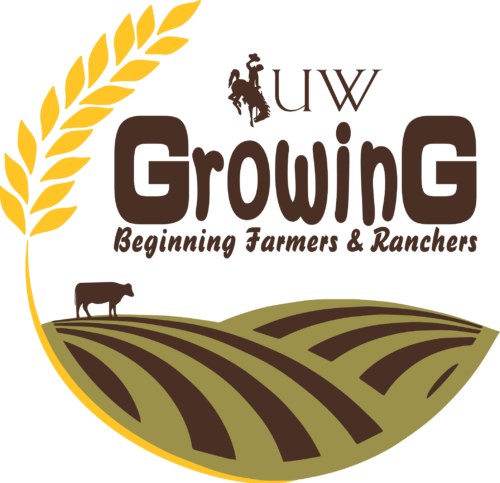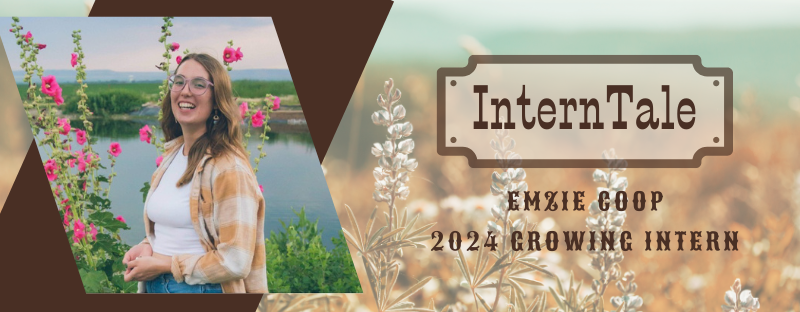Visiting The Farms
#bfrdpwy #aginternship #RightRisk
With Peony season coming to a close, my host and I have more time to explore different aspects of flower farming. We officially wrapped up this peony season this Tuesday. I took all the dry-stored peonies out of the cooler, cut an inch off the ends, and stuck them in water. By morning, the once dead-looking petals were as vibrant and fresh as ever! We used these remaining peonies to create a fun install on the back wall of my host’s pop-up shop. Since Tuesday was her last day, she wanted to do something special to commemorate the end of peony season. We created bunches with the remaining peonies and some ribbon and hung them on the back wall of the pop-up shop. This created a beautiful display and started the drying process for the peonies.
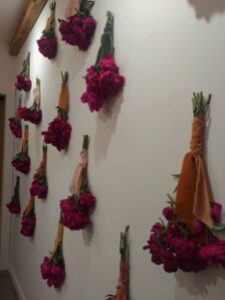
The rest of the week was busy with visiting flower farmers around the area. One woman has been growing peonies in Wilson Wyoming for years out of her backyard. Though it is a small space, she has consistent clients. She operates by having customers reply to an email with the amount and kind of peonies they want. She then cuts the stems she needs and puts them in her garage for pickup. Customers can come in, pick up their flowers, and leave cash or check in a basket. This payment type run by the honor system shocked me, as I imagined that was a good way to lose money. Yet, the lady has never had any issues, and has even had instances of people paying more than they needed to! This was surprising, but encouraging to see the community trust each other in this way.
We also visited two farms in Colorado. One of these farms has an emphasis on aromatherapy. She grows lavender and rose for aromatherapy products, and cut flowers for her farm share. While I love the smell of lavender and peppermint oil, I’m doubtful of their healing properties. The woman leading the workshop talked about it on a scientific level, a language I can understand. She said that sensory input is processed in the Amygdala, which is also where we regulate emotion. This is why certain scents have a calming, or even focusing effect on people. I am not interested in making essential oils, but it was interesting to see another use for flowers. This farm also grew a large variety of flowers and foliage for seasonal CSAs – having a wide variety of plants makes bouquets more unique and worth the price. This is a good inspiration for my future operation and gave me some ideas of what kind of plants to grow.
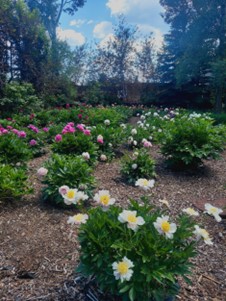
The third farm we visited was a no-till, farmer’s collective. Three different farmers shared this space and focused on regenerative practices. Her farm was by far the largest one I have seen, but still small by industry standards. When I asked her about the benefits of no-till, she said it preserves the microbiome in the soil. An improved microbiome increases soil health and aeration, which naturally assists plant health. She also said no-till can be time-consuming and difficult to achieve in dry, sandy areas. So although no-tilling is a great practice for wetter areas, it is less than ideal in areas such as Wyoming.
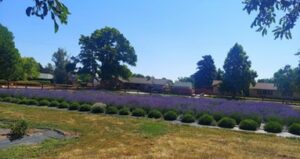
Visiting other farms of differing sizes and styles gave me ideas of what I want to use in a future operation, and things I want to avoid. I loved the variety of flowers I saw at the different farms. Those styles of farms are great for floral design and CSA’s. However, as much as I love regenerative agriculture, I realized no-till farming is not a great alternative in the areas I want to farm in. Overall, these farm tours gave me an appreciation for the different uses of flowers and showed me there is always room for more people in the flower industry.
Submitted by: Emzie Coop
Edits by: GrowinG Internship Team
